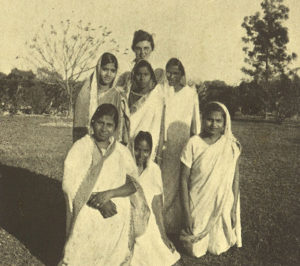Frank Balfour was the honorary Edinburgh Secretary in the 1930s for a medical mission in Raxaul, North India, on the border of Nepal. Nepal would not allow Christian missionaries into the country, so some medically-qualified Edinburgh people set up a hospital near the border, and many Nepalese came across for treatment.
About 1930, Frank sent them a 16mm Kodak cine camera to publicise the work, and one of the films which they sent home follows here. This film does not feature the town of Raxaul which (to quote the guidebook) ‘had little to recommend it apart from being the border crossing to Nepal’. In order to give Scottish viewers a taste of Indian life, the film was taken in Benares (now known also as Varanasi), to the south of Raxaul, regarded as the spiritual capital of India as many pilgrims go there to bathe in the River Ganges, as the film shows. The titles in the film are the original ones. When Francis Balfour sent out his last quarterly Newsletter, in 1940, he noted some mementos in his diary, and the page from the diary is reproduced here.
More details are available elsewhere on this website, under ‘Law – History of Balfour+Manson‘, page 22.
The hospital is still there, now known as the Duncan Hospital. On its website, www.duncanhospital-eha.org, there is a comment under the section ‘About us’ that ‘Miss Ruth Horne responded to the need of an Administrator to put administrative systems into places and joined in the year 1936.’ Ruth was Frank Balfour’s secretary in his legal office, and when business commitments permitted, he dictated letters to her for typing about the work of the hospital. When these included an appeal for someone to go to India to help with the administration, she herself volunteered and spent the rest of her working life at Raxaul.
However, this film is mentioned for another reason. In 1939, the mission sent the camera back, saying it was obsolete. Frank used it until 1955, then passed it to Ian Balfour, who took family pictures with it until 1980, when electronic cameras took over from film cameras.
It had 2 controls – a handle to wind the spring and a stop/start button. Most of the pictures here on this site, except for the wedding footage (which was a gift from one of the guests) were taken with it.
